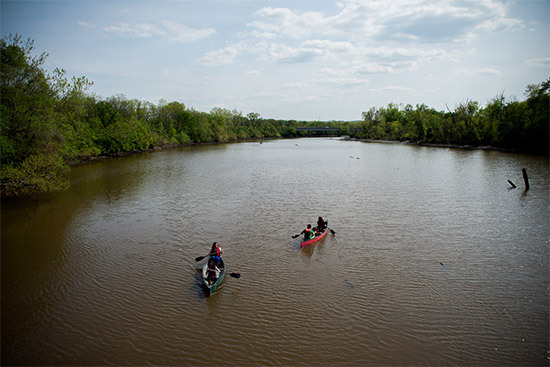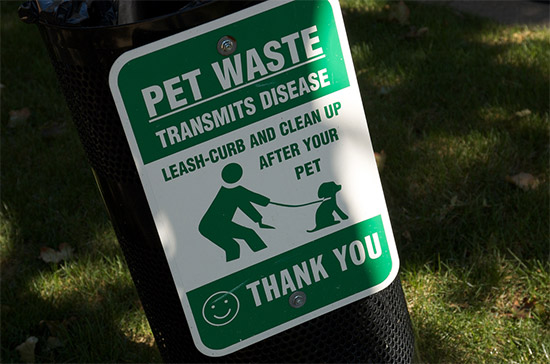Anacostia, Patapsco restoration projects receive funding
Four organizations will receive more than $230,000 to restore portions of the urban waterways.
Four organizations in the Chesapeake Bay watershed will receive more than $230,000 to restore portions of the Anacostia and Patapsco rivers.

Image courtesy Tommy Wells/Flickr
In the District of Columbia, two organizations will connect students to the Anacostia in an effort to boost local stewardship. Living Classrooms of the National Capital Region will put third and fifth graders onto canoes, kayaks and an educational vessel, while the Smithsonian Anacostia Community Museum will turn at-risk high school students into citizen scientists to monitor water quality along Watts Branch.
In College Park, the University of Maryland will design low-impact development solutions to lower the amount of polluted stormwater running off of schools and into the Anacostia. And in Baltimore, the University of Baltimore will monitor fecal bacteria in a portion of a Patapsco River tributary to help two blue collar neighborhoods reduce pet waste and prioritize infrastructure repairs.

Image courtesy Zach Karpinski/Flickr
The funding has been granted through the U.S. Environmental Protection Agency’s (EPA) Urban Waters Small Grants program, which supports the restoration of urban rivers and streams in 18 geographic regions.
Healthy and accessible urban waters can improve economic, educational, recreational and social opportunities in nearby communities.
“People, buildings and businesses are all concentrated in urban areas, making it even more important to protect waterways from pollution,” said EPA Administrator Gina McCarthy in a media release. “These communities will receive grants, allowing them to help turn these waterways into centerpieces of urban renewal, spurring economic development and job creation.”
In addition to the four projects inside the Bay watershed, the Urban Waters Small Grants program will fund 32 projects in 15 other states and Puerto Rico.

Comments
Hi Joe,
Here is a blurb about the Patapsco project, found on the EPA's Urban Waters Small Grants webpage:
The University of Baltimore will use DNA-based microbial source tracking to estimate the relative contribution of human and dog fecal bacteria to outfalls from the Mill Corridor, which is a stretch of the lower Jones Falls stream that runs through two historically blue collar neighborhoods. The data from the effort will be provided to the City of Baltimore and the community for prioritizing infrastructure repairs to reduce pet waste. The project team will train community volunteers to monitor water pollution, and educate middle and high school students about their local stream ecosystems. A long-term outcome of the project is expected to be lower bacteria loads in the lower Jones Falls stream and the Inner Harbor.
Award Amount: $59,827
Which neighborhoods in Baltimore are involved and who is the contact/coordinator for the Patapsco portion of this project?
Thank you!
Your comment has been received. Before it can be published, the comment will be reviewed by our team to ensure it adheres with our rules of engagement.
Back to recent stories